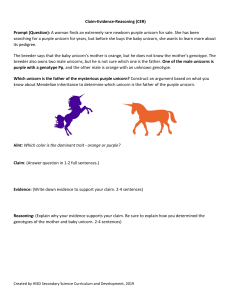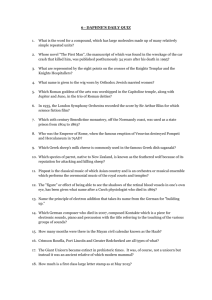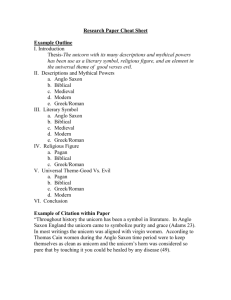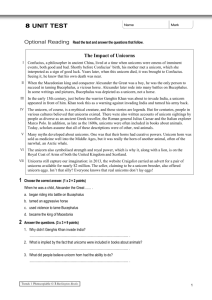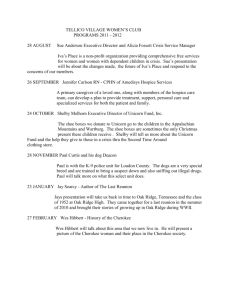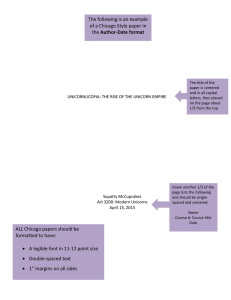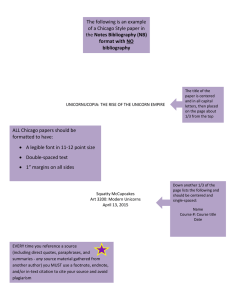The PRIMES 2011 problem set Dear PRIMES applicant,
advertisement
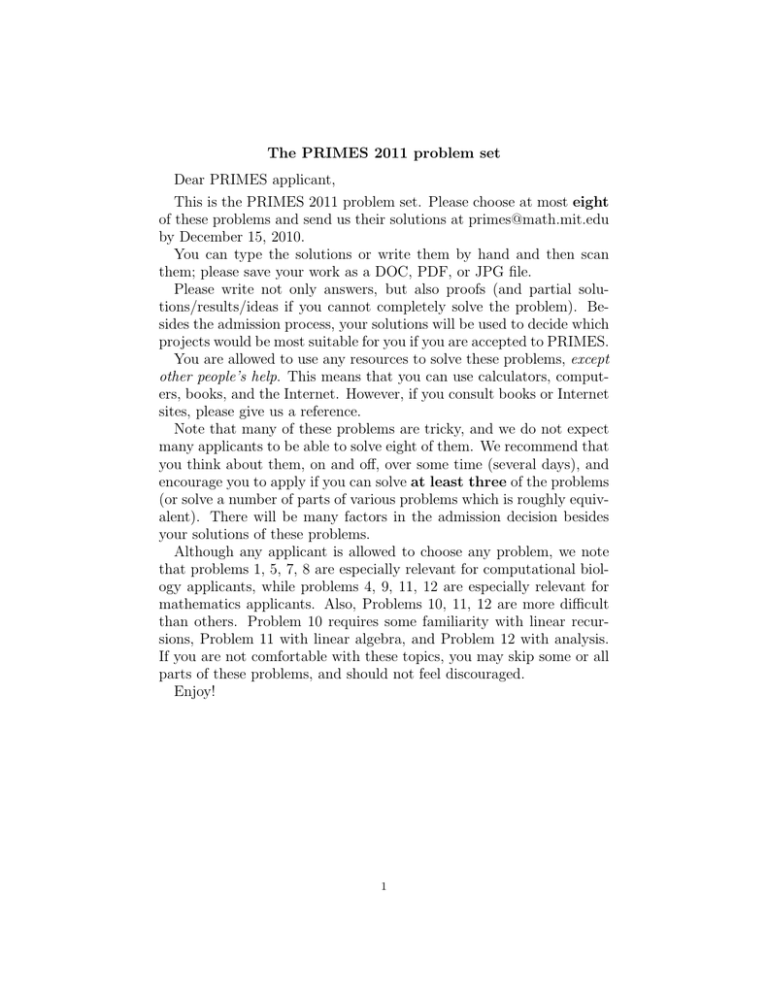
The PRIMES 2011 problem set
Dear PRIMES applicant,
This is the PRIMES 2011 problem set. Please choose at most eight
of these problems and send us their solutions at primes@math.mit.edu
by December 15, 2010.
You can type the solutions or write them by hand and then scan
them; please save your work as a DOC, PDF, or JPG file.
Please write not only answers, but also proofs (and partial solutions/results/ideas if you cannot completely solve the problem). Besides the admission process, your solutions will be used to decide which
projects would be most suitable for you if you are accepted to PRIMES.
You are allowed to use any resources to solve these problems, except
other people’s help. This means that you can use calculators, computers, books, and the Internet. However, if you consult books or Internet
sites, please give us a reference.
Note that many of these problems are tricky, and we do not expect
many applicants to be able to solve eight of them. We recommend that
you think about them, on and off, over some time (several days), and
encourage you to apply if you can solve at least three of the problems
(or solve a number of parts of various problems which is roughly equivalent). There will be many factors in the admission decision besides
your solutions of these problems.
Although any applicant is allowed to choose any problem, we note
that problems 1, 5, 7, 8 are especially relevant for computational biology applicants, while problems 4, 9, 11, 12 are especially relevant for
mathematics applicants. Also, Problems 10, 11, 12 are more difficult
than others. Problem 10 requires some familiarity with linear recursions, Problem 11 with linear algebra, and Problem 12 with analysis.
If you are not comfortable with these topics, you may skip some or all
parts of these problems, and should not feel discouraged.
Enjoy!
1
Problem 1. You roll four dice until you have at least two equal
numbers (i.e., if all the four numbers are different, you just roll the
dice again). Then, you win if at least one of the four dice shows a 3.
What’s your chance of winning? (Represent the answer as a fraction).
Problem 2. Let 125! = 5k N , where k is a positive integer, and N
is a positive integer not divisible by 5 (such k and N are unique).
(a) What is k?
(b) What is the remainder of division of N by 5?
Problem 3. How many integers between 1 and 1,000,000 cannot be
written as a sum of two or more consecutive positive integers? What
are these numbers?
Problem 4.
are the first 100 digits after the decimal √
point of
√ What2010
the number ( 10 + 3) ? (You may compute a few powers of 10 + 3
by calculator, observe a pattern, then try to prove).
Problem 5.
(a) Mary lives on the corner of 7th avenue and 54th street in Manhattan. Every night she takes a 10-blocks-long walk which begins and
ends at her home. How many different walks can she take?
(b) How many different walks can Mary take if her walks are 2n
blocks long? (we assume that Manhattan is an infinite rectangular
lattice).
(c) Suppose Mary is an absent-minded mathematician, and takes a
20-blocks-long walk which starts at her home but does not necessarily end there. What’s the chance she actually does return home at
the end of the walk, given that at each corner she picks the direction
randomly with equal probabilities (i.e., each direction with probability 1/4)? Compute
the approximate value, using Stirling’s formula
√
n
n! ∼
(n/e)
2πn.
=
Problem 6. The vertices of a triangle T in the plane have rational
coordinates. Can its sides be in proportion 2 : 3 : 4?
Hint: Use Heron’s formula for the area of a triangle.
Problem 7. In an hour, a bacteria dies with probability p or else
splits into two. What is the probability that a single bacteria produces
a population that will never become extinct?
Hint: Let pn be the probability of the population to die out by the
n-th generation. Write a recursive equation for pn , compute its limit,
and express the answer via this limit.
Problem 8. Consider a population of unicorns. Unicorns are
diploids, i.e., they have two copies of each gene, say A and B, which
may be normal or mutated (i.e., defective). When a baby unicorn is
born, each of the two parents passes one of these two copies to the baby.
2
If only one of the two copies is mutated, then the baby unicorn is a
carrier of a genetic disease; i.e., it does not actually have the disease
but may pass it to descendants. However, if both of these copies are
mutated, then the baby unicorn is born sick and will not survive to
adulthood (thus not producing descendants).
(a) If a unicorn carries a mutated copy of a certain gene, then for
each of its siblings, what is the probability of having a mutated copy of
the same gene? (You may neglect the rare possibility that both parents
carry a mutation in this gene).
The genome of a unicorn has 8000 genes. Also, it is known that for
any given adult unicorn and any given gene, with probability 1/1000
one of the copies of this gene (A or B) in this unicorn is mutated, and
these mutations are statistically independent for different genes.
(b) What is the probability that the baby unicorn has a genetic
disease if its parents are siblings?
(c) if its parents are unrelated?
Problem 9. Let n be a positive integer. Find all the odd numbers
between 1 and 2n which can be remainders modulo 2n of a perfect
square.
Hint. Compute for the first few values of n to determine the pattern;
then use induction.
Problem 10. (a) Let an (k) be the number of sequences of zeros
and ones of length n which don’t contain k zeros in a row. Find the
recursive equation for an (k), when k is fixed.
(b) If you toss a coin 10 times, what’s the chance of not getting 3
heads in a row?
(c) Let pn (k) = an (k)/2n be the probability not to get k heads in
a row from n coin tosses. Show that for each k there are constants
Ck > 0 and 0 < bk < 1 such that pn (k)/Ck bnk → 1 as n → ∞. What is
bk ?
(d) Calculate an (2) and b2 explicitly.
Problem 11.
Let M (n) denote the space of all real n × n matrices. Thus M (n)
is a real vector space of dimension n2 . Let f (n) denote the maximum
dimension of a subspace V of M (n) such that every nonzero element
of V is invertible.
(a) Show that if n is odd, then f (n) = 1.
(b) Show that f (rs) ≥ f (r) for any positive integers r, s.
(c) Show that for any n, f (n) ≤ n.
(d) Find f (2).
(e) (harder) Find f (4).
(f) (very hard) Find f (8).
3
NOTE. There is a general formula for f (n), but its proof is extremely
difficult.
(g) What is f (n) if instead of real matrices we consider complex
matrices? Rational matrices?
Problem 12. Let m be a positive integer, and let a sequence of
positive numbers {xn } be defined recursively by x1 = 1/2, xn+1 =
.
xn − xm+1
n
(a) Show that xn → 0 as n → ∞.
log xn
(b) Find a := limn→∞ log(1/n)
.
a
(c) Find K := limn→∞ n xn .
Hint: for (b),(c), compare the sequence xn to yn = Cn−b , C > 0,
b > 0. Namely, express yn+1 as a function of yn , and choose C, b so
that this function is “as close as possible” to f (x) = x − xm+1 .
4
